Framing the Zone: Who, What, Where, and Why
By Madison Heath | May 27, 2025
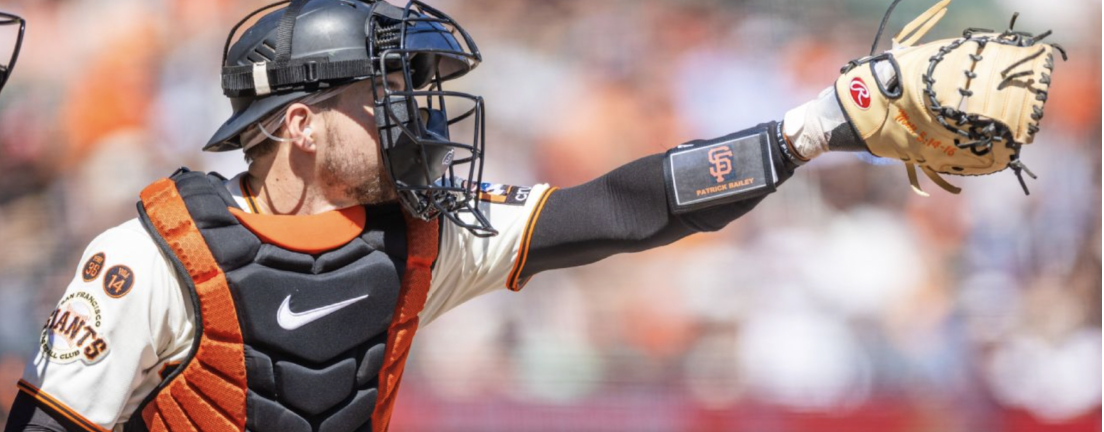
Introduction
Framing is an underappreciated art that separates good catchers from great ones. The ability to subtly coax borderline pitches into called strikes can change an at-bat, an inning, and even a game. In a sport built on inches and instinct, framing provides a measurable edge. Using data from the 2024 MLB season, this article breaks down which catchers excelled at framing, where in the zone they dominated, and how much this skill impacts team success.
The Shadow Zone: Where Framing Happens
The shadow zone is defined as the band around the edges of the strike zone roughly two baseballs wide (one inside, one outside the zone). This is the area where pitches are most likely to be borderline and where framing makes the biggest difference. Umpires are influenced by pitch location, catcher presentation, and context. A catcher who can “steal” a few strikes here gives their pitcher a real advantage.
The Shadow Zone Strike Rate is defined as the percentage of non-swinging pitches in the shadow zone that are called strikes. For this analysis, catchers are filtered to have at least 250 shadow zone pitches received in 2024 to ensure a large enough sample size.
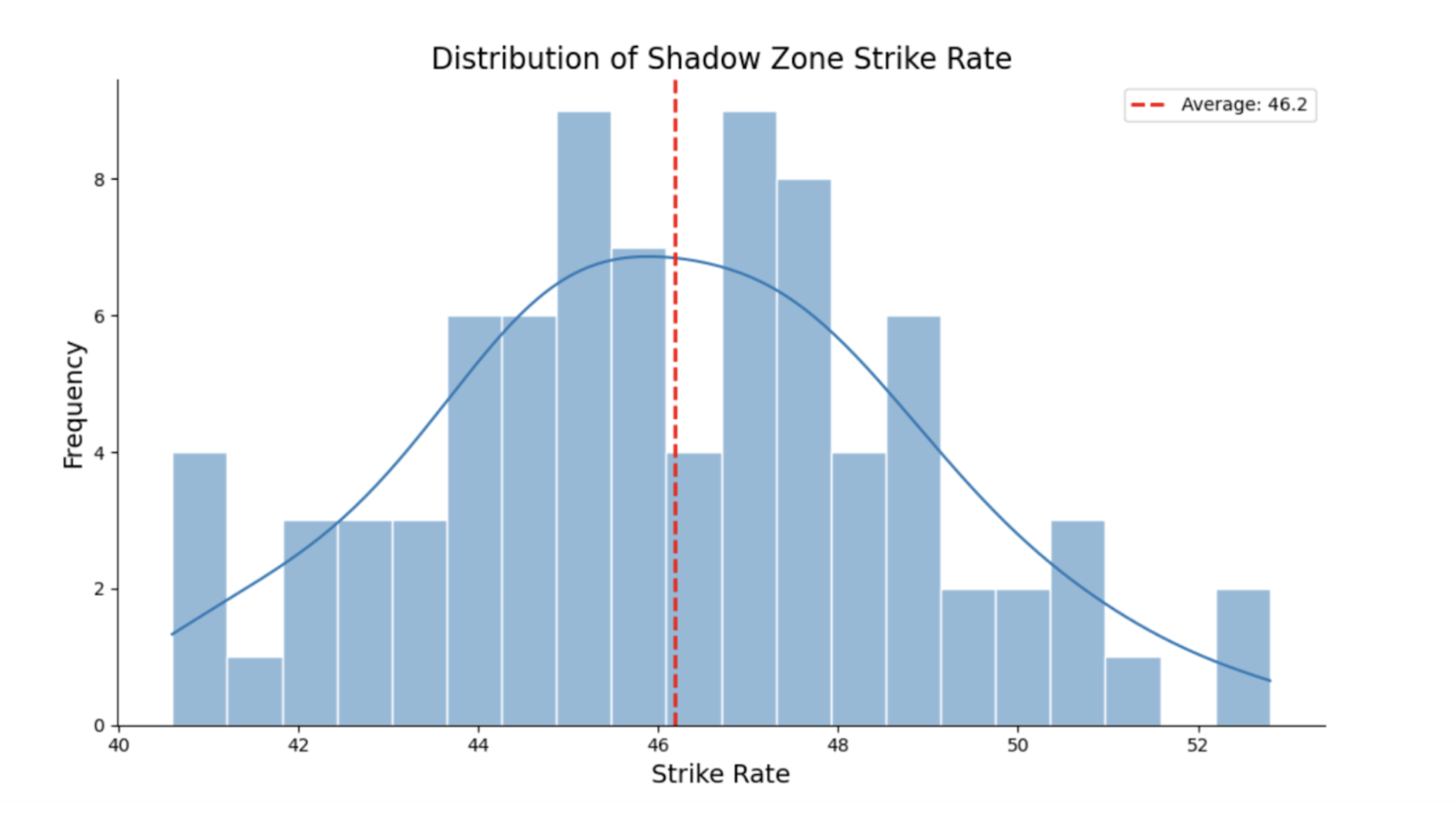
This histogram shows the distribution of shadow zone strike rates across all qualified catchers in 2024. The average strike rate was 46.2%, with a relatively bell-shaped curve. The maximum strike rate was 52.8%, and the minimum was 40.6%.
Subzones:
MLB’s strike zone is often divided into smaller subzones (Zones 11–19) to help analyze performance location-by-location. Each represents a slice of the plate or just outside it.
 Graphic From Baseball Savant
Graphic From Baseball Savant
Here is the standard layout of strike zone subzones used in framing analysis ranging from inside to outside and top to bottom. Not all subzones are equal in difficulty for framing strikes.
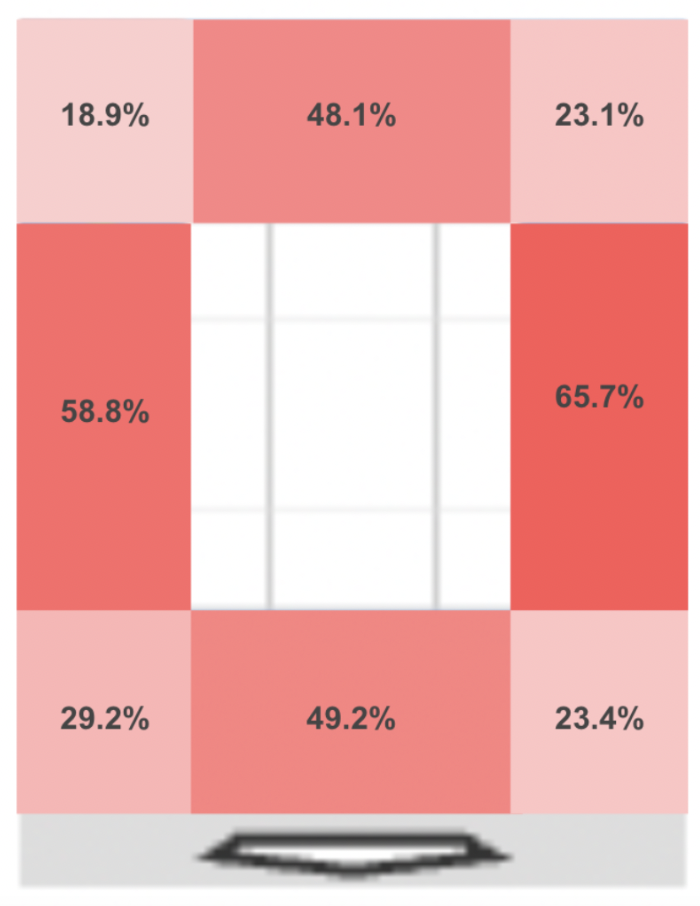
This heatmap shows league-average called strike rates in the shadow zone for each subzone. Inside and outside pitches have higher strike rates, while the corners are harder to frame, with the upper left corner having the lowest called strike rate at 18.9%.
However, catchers who have strong framing abilities can increase the chances that these shadow zone pitches will be called strikes.
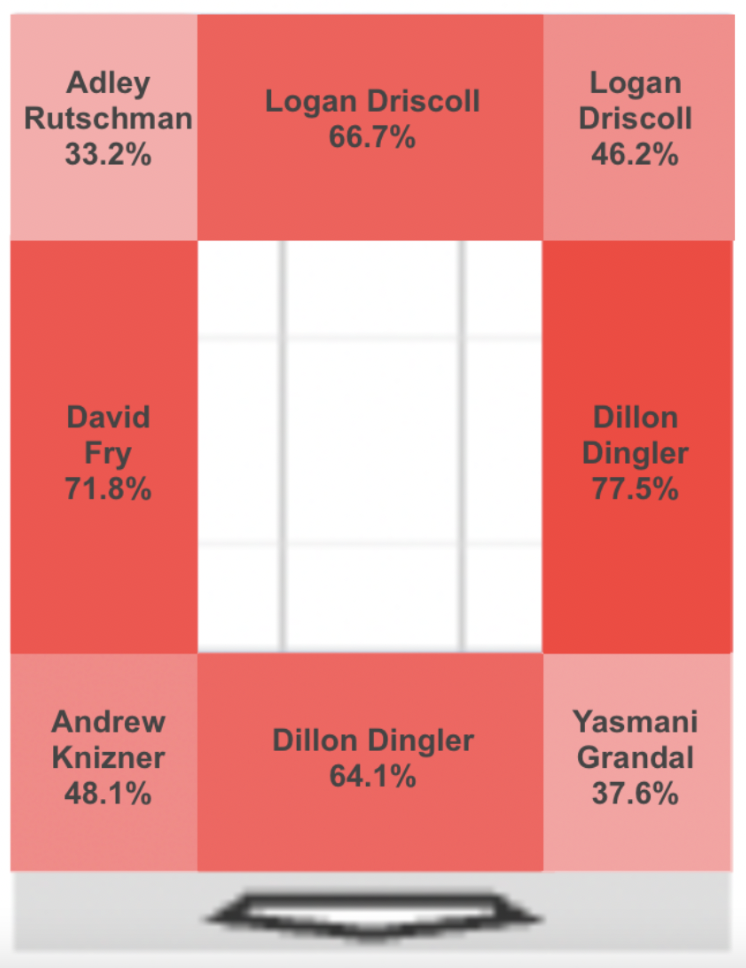
This heatmap highlights the top-performing catcher in each shadow subzone based on called strike rate in 2024. Interestingly, no single catcher dominates the entire zone—Logan Driscoll stands out at the top, while Dillon Dingler controls both the lower and right edges. Framing success is often zone-specific, with different catchers excelling in different areas.
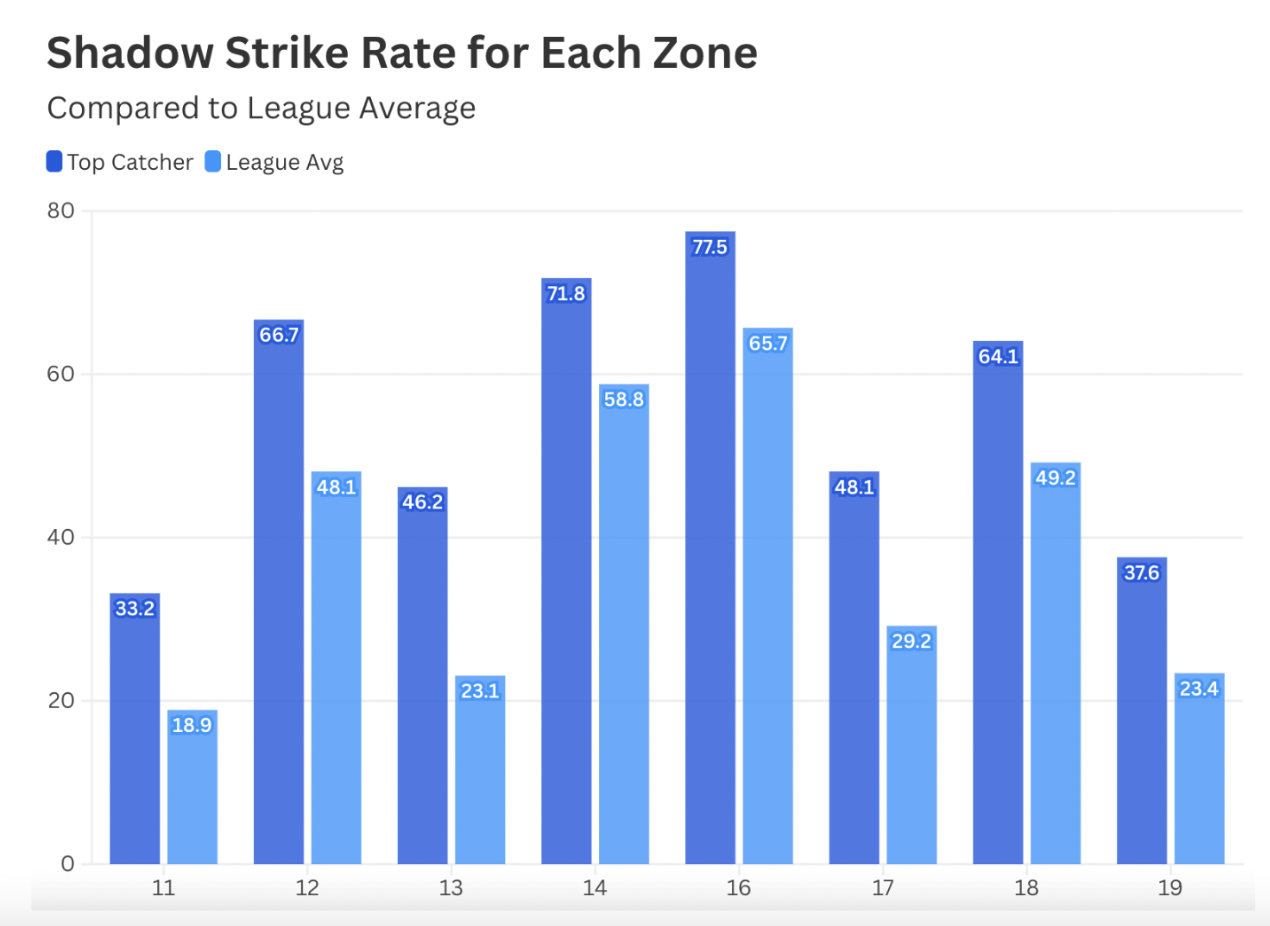
Additionally, this bar chart compares the top framers’ strike rate in each zone to the league average. On average, top players outperformed the league average by around 51%, with the largest increase being 100% by Logan Driscoll in Zone 13.
Catcher Framing Runs
Another metric used to assess framing abilities is Catcher Framing Runs (CFR). This statistic is an estimate of how many runs a catcher saves or costs their team through framing. It incorporates pitch location, umpire behavior, and batter-pitcher context.
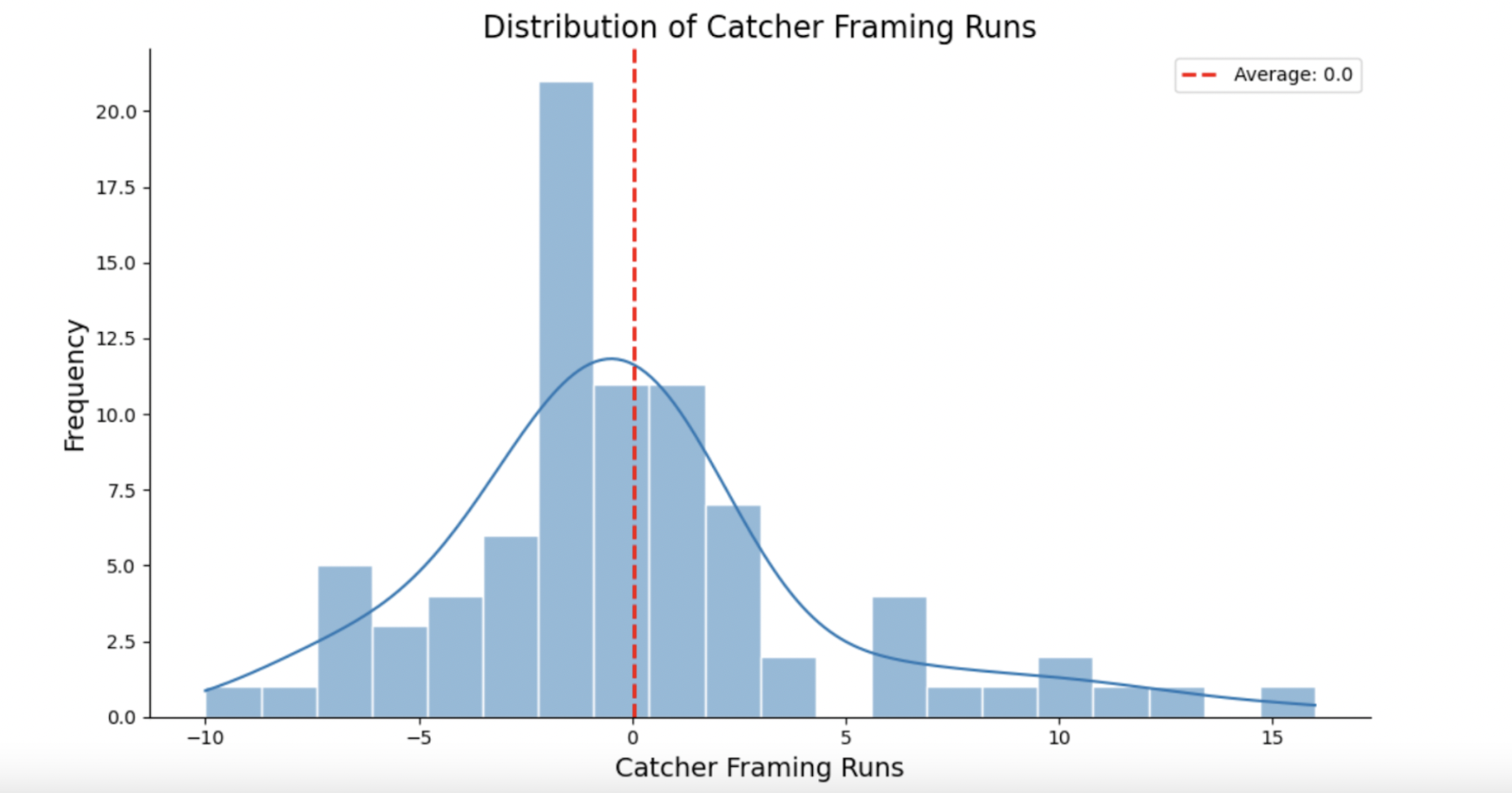
This histogram shows the distribution of CFR amongst all eligible catchers in 2024. Unlike strike rate, this distribution is wider and less symmetric with an average of 0 runs. There is a large spread, and the data is left-skewed with a longer right tail, meaning that while most catchers are clustered around or below average, a smaller group of elite framers contribute significantly more value. The top catcher saved as many as 16 runs through framing, while the lowest performer cost his team 10 runs.
Case Study: Patrick Bailey
The player who saved 16 runs through framing, the most in all of baseball, was Patrick Bailey of the San Francisco Giants.
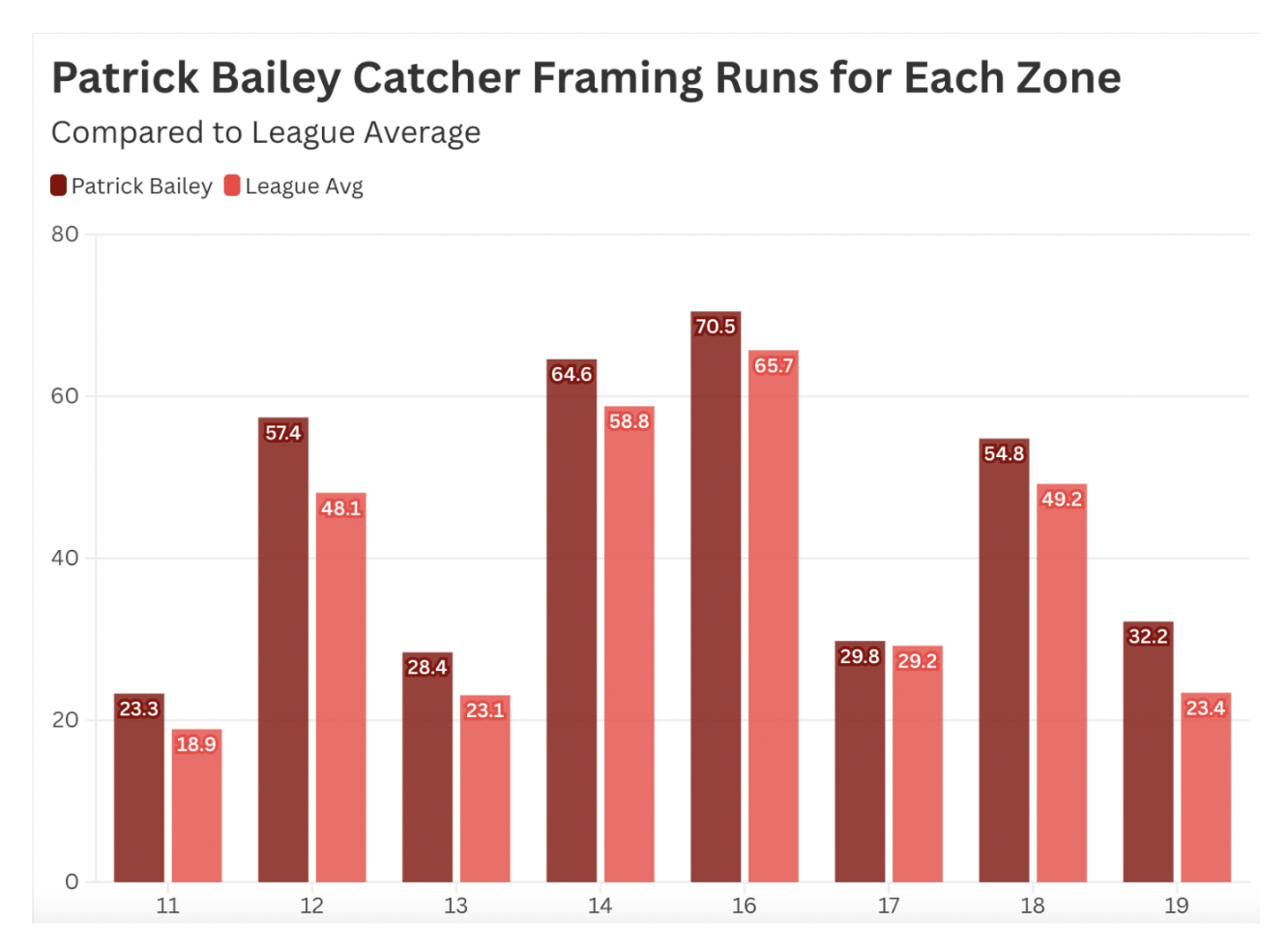
This bar chart shows Bailey’s shadow zone strike rates compared to the league average for each subzone in 2024. Bailey had above-average strike rates in every part of the shadow zone, highlighting his consistent and well-rounded performance behind the plate. His strength wasn’t just in stealing strikes low or inside, but across the board. Bailey’s framing abilities helped Giants pitchers stay ahead in counts, inducing more swings and shortening innings.
Does Framing Help Teams Win?
Framing is an important defensive tactic that can help save runs, but how effective is it in the long run for winning games?
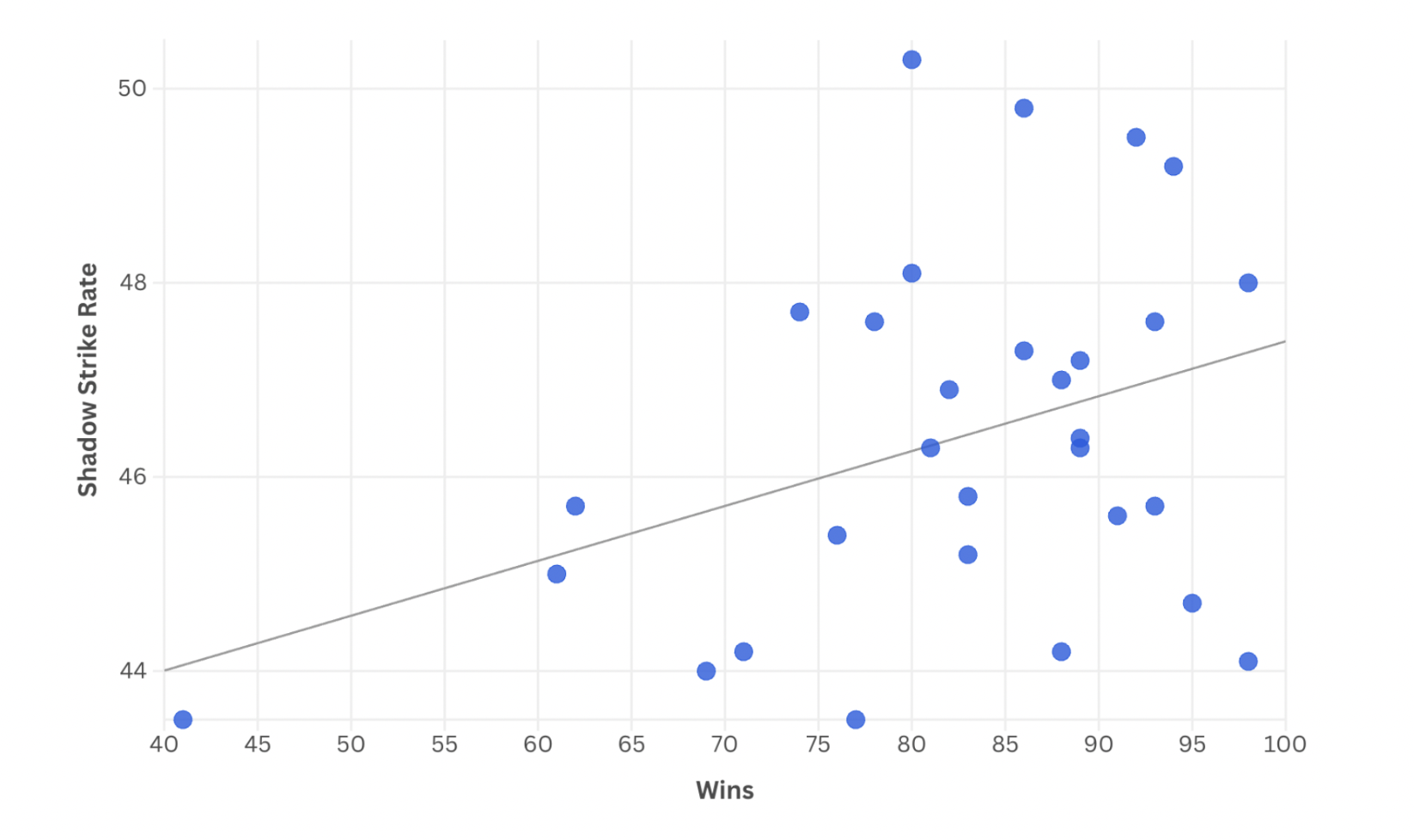
Each point on this scatter plot represents a major league team from the 2024 season with their number of regular season wins on the x-axis and team shadow strikeout rate on the y-axis. The graph shows a weak to moderate but positive correlation (r = 0.37) between team shadow strikeout rate and wins. While framing isn’t the only factor influencing team success, it contributes meaningfully alongside other elements such as pitching strength, offensive production, and defensive efficiency.
Conclusion
Framing may not be the number one skill baseball fans focus on, but its impact is undeniable. In the shadow zone where judgment and presentation matter most, top catchers can influence the game in ways that don’t always show up in the box score. Not all parts of this zone are equally difficult, but the best framers adapt, consistently helping their pitchers get ahead in counts. In a sport built on margins, mastering the edges might just be the key to winning. Even a single extra strike can shift an at-bat in the pitcher’s favor; 16 runs over a season can shape a playoff push.

